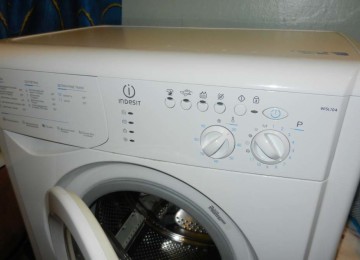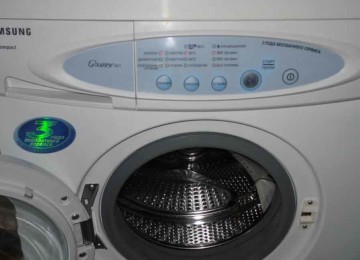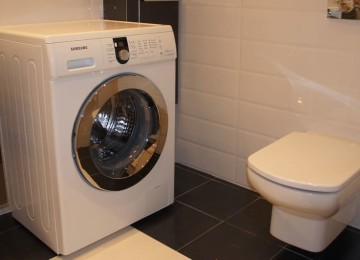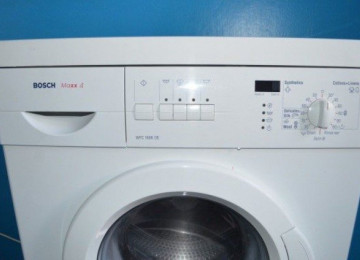 Many apartments have a very small bathroom area. More often these are secondary market apartments, during the planning of which space for a large number of household appliances was not taken into account. Now the owners of such housing are faced with the problem of lack of space to install even the most necessary things. For example, small bathrooms often do not allow room for anything other than the bathtub itself. Owners of such housing are thinking about how to properly install a washing machine in the kitchen.
Many apartments have a very small bathroom area. More often these are secondary market apartments, during the planning of which space for a large number of household appliances was not taken into account. Now the owners of such housing are faced with the problem of lack of space to install even the most necessary things. For example, small bathrooms often do not allow room for anything other than the bathtub itself. Owners of such housing are thinking about how to properly install a washing machine in the kitchen.
However, even with a clear need, people come to this idea through doubts and disputes. There is a prejudice that laundry devices are found exclusively in the bathroom. To dispel this myth, we need to understand how the washing machine ended up in our bathrooms. And such a trend appeared only during the times of the USSR. Back then, during mass construction in apartment buildings, special laundry rooms were not provided to save space. Of course, even before the Soviets, most families did not allow themselves such luxury. However, in the countries of Western Europe and America, often the bathing and laundry rooms were two different rooms. This means, if you look at it, clothes should not be washed in the bathroom. Since there is no laundry room, why does the bathroom perform its function?
Is it worth it?

In this case, the question arises whether it is possible to install a washing machine in the kitchen or in the hallway.Some people initially plan it in the kitchen, considering this a practical solution.
Installing a washing machine in the kitchen has its advantages:
- Saving space in the bathroom.
- The washing machine is always in sight. An emergency breakdown will be noticed faster.
- Washed clothes do not stay in the drum for long. If you often forget to hang up your laundry, then more household members in the kitchen will remember about it.
- You can install a full-size machine.
In each individual case, these advantages will seem controversial, so you should make a decision based on your specific situation. In addition, the machine in the kitchen also has significant disadvantages:
- It is problematic to install a machine with a vertical loading type.
- Questionable aesthetic appearance.
- The machine gets dirty while cooking.
- It is inconvenient to store powder and dirty laundry.
- Excessive noise in the kitchen.
Installation nuances
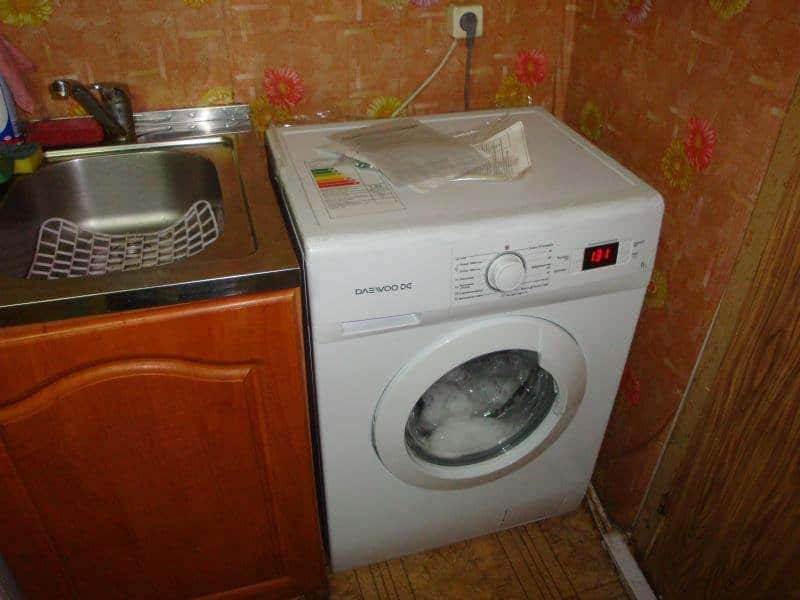
More often than not, the issue of installing a washing machine in the kitchen concerns not so much convenience as saving space. Despair makes you search exotic solutions this question. But this is no reason to despair. If you put in some effort, you can use the washing machine as an interesting element of the interior. In general, the washing machine in the kitchen looks stylish. There are enough examples where it complements the design of the kitchen and harmoniously combines with other household appliances.
The washing machine in the kitchen is built-in or standing alone. The first option is more expensive than the second and is chosen much less often.If the budget allows for built-in appliances, then, as a rule, the area of the apartment allows you to place the washing machine where it should be. A free-standing one is placed under the countertop, or separately from the kitchen furniture. Sometimes appliances are covered with facades to prevent kitchen grease from settling on the surface.
Before placing the machine in the kitchen, decide on the location and consider all possible little things that could interfere with the installation or normal operation of the device. When installing a washing machine in the kitchen, you need to pay attention to some features.
- Do not connect the machine directly to a regular drain under the sink. Then pipe leaks may not be immediately noticeable. Water will have time to seep into the neighbors below, ruining the flooring of the kitchen or other rooms. It is better to make a special outlet from the rear wall. Then the leak will be visible almost immediately.
- Some models of washing machines have a pocket for pouring powder that is slightly deeper than the main façade of the device. So the countertop can partially or completely block access to the basket. This problem is also relevant if you plan to cover the machine with a facade. As a rule, they tend to place the equipment deeper in order to attach hinges for doors. The further away the machine is, the less likely it is to add powder.
- When the machine is framed inside a furniture set, it is sometimes covered with a plinth from below. However, you need to remember that at the bottom in a special pocket there is a pipe for residual water drainage. If you need to use it, the base needs to be easy to dismantle.
- When choosing a place in the kitchen where to install the machine, remember not to place it near the stove. Firstly, it will quickly become dirty.Secondly, high temperatures contribute to breakdowns.
- Leave a small gap between the table top and the machine lid. If imbalance, vibration or rattling occurs, the device will not hit the table.
- Consider the depth of the furniture and washing mashine. Do not place equipment close to the wall; leave room for pipes. If facades are hung, the hinges should not scratch the body of the machine.
Connection process
Once the issue of location and design has been resolved, you can proceed directly to the connection. To avoid troubles after installing a washing machine, it is best to use the services of a specialist. But it is possible to install a washing machine correctly in the kitchen yourself if you strictly follow the instructions. It is usually included with a set of documents for the device.
- Check the electrical system in the kitchen. The washing machine consumes quite a lot of electricity. Make sure that your electrical system is capable of operating such a device. In addition to the machine, you will often need to simultaneously use a refrigerator, electric kettle, microwave or other household appliances. It is better to route the wiring separately. The socket must be installed with grounding.
- Level the floor under the washing machine. It should stand on a flat surface. If there are minor unevennesses, you can adjust the legs. In case of more noticeable unevenness, efforts will need to be made to level it. To make sure the device is level, try rocking it. The machine will wobble if the floor is uneven.
- Install a triple pipe with a tap on the cold water pipe. It is advisable to have a tap to turn off the water during an emergency.
- We connect the hose from the washing machine to the tap.
- Next, we connect the machine to the sewer. First, the drain hose is inserted into the pipe. We place one end into the sewer drain, and the other to the washing machine. We send the third one to the sink.
- The last stage is installing the countertop.
The washing machine can be installed in the kitchen, it does not spoil the interior. It is important to choose a model with the required dimensions, fit it correctly into the kitchen set and connect correctly.






